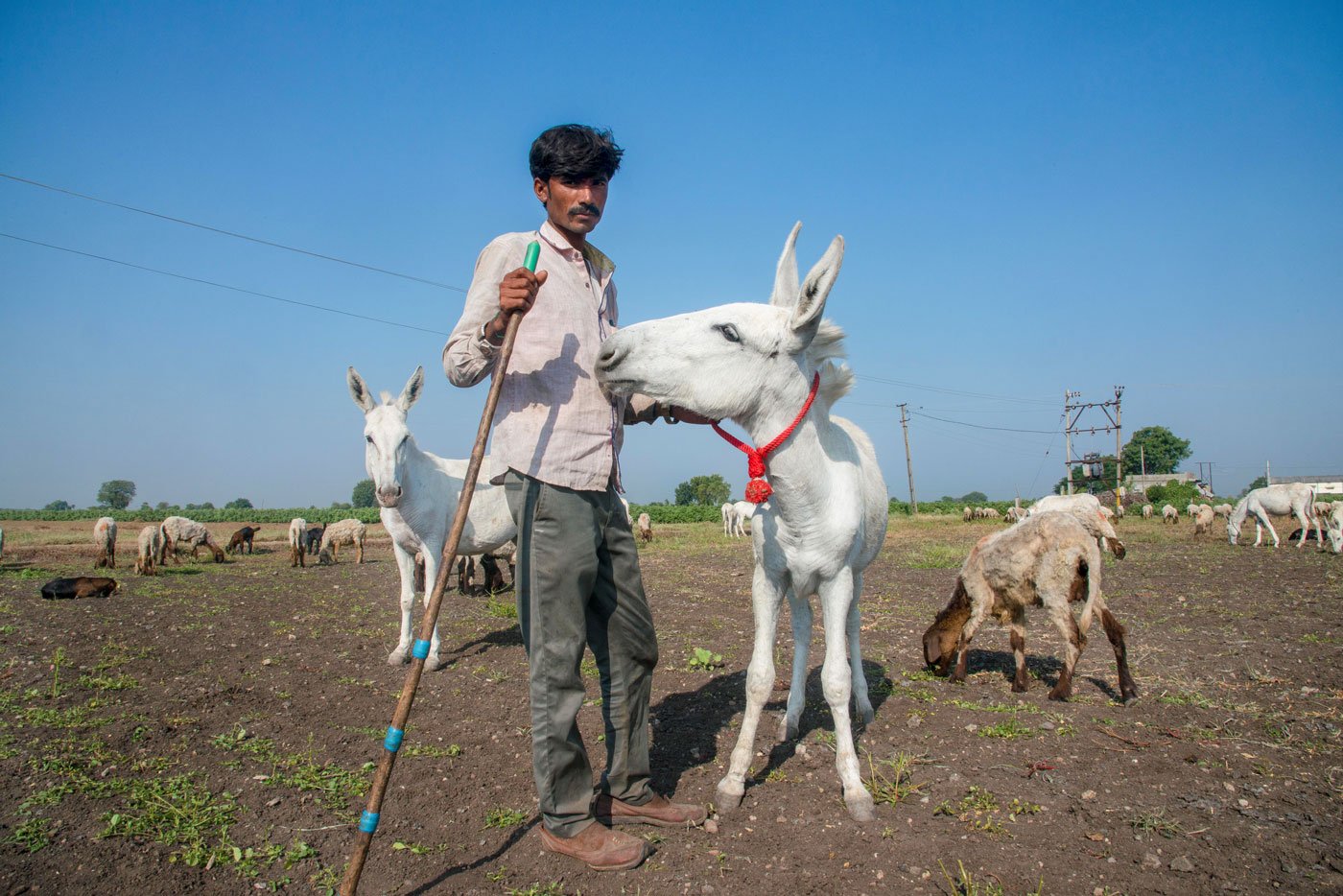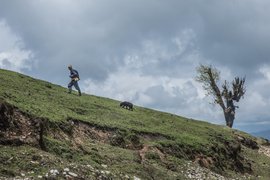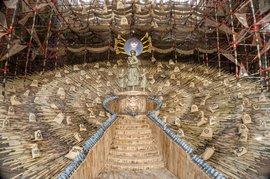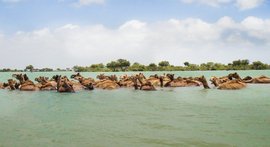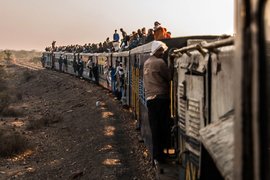Seven thousand rupees for a litre of donkey’s milk? For a litre of anything? Sounds insane, but that’s what the newspaper headlines said in September 2020 about the milk of Halari donkeys in Saurashtra, Gujarat. It even turned out to be true – if only in a single verifiable instance. And the Halari-rearing communities of Gujarat would laugh you out of sight if you dared suggest that they were routinely finding such rates.
The price for this variety of milk, said to have rare medicinal qualities, seems to have touched a maximum level of Rs. 125 a litre in Gujarat. And even that came from an organisation buying limited quantities of it for research.
And so here I was in Saurashtra, following up on the newspaper headlines. In the barren cotton fields of Rajkot district I met Kholabhai Jujubhai Bharwad, a pastoralist in his 60s, from Jampar village in Bhanvad block of Devbhoomi Dwarka district, on an annual migration route with his family. They were tending a herd of goats and sheep, and five Halari donkeys.
"Only Rebari and Bharwad communities keep Halari donkeys,” said Kholabhai. And among them, very few families are “keeping the tradition alive. These animals are beautiful but not sustainable for our livelihoods. They generate zero income." Kholabhai and his five brothers together own 45 donkeys.
Calculating the incomes of nomadic pastoralists can be most confusing. Their income is neither steady nor fixed. And they do not have the same monthly expenses on say fuel and electricity that some others do. But while cautioning us on generalising, researchers at the NGO Sahjeevan’s Centre for Pastoralism in Bhuj say they might have a gross income of between Rs. 3-5 lakhs a year for a family of five (depending on the size of the herd) and a net income (after all expenses) varying between Rs. 1-3 lakhs a year. This, from selling wool and milk of goats and sheep.
Donkeys seem to generate little or no revenue for them at all. With the pastoralists seeing a decline in income over years now, they find it tough to maintain herds of Halari donkeys.
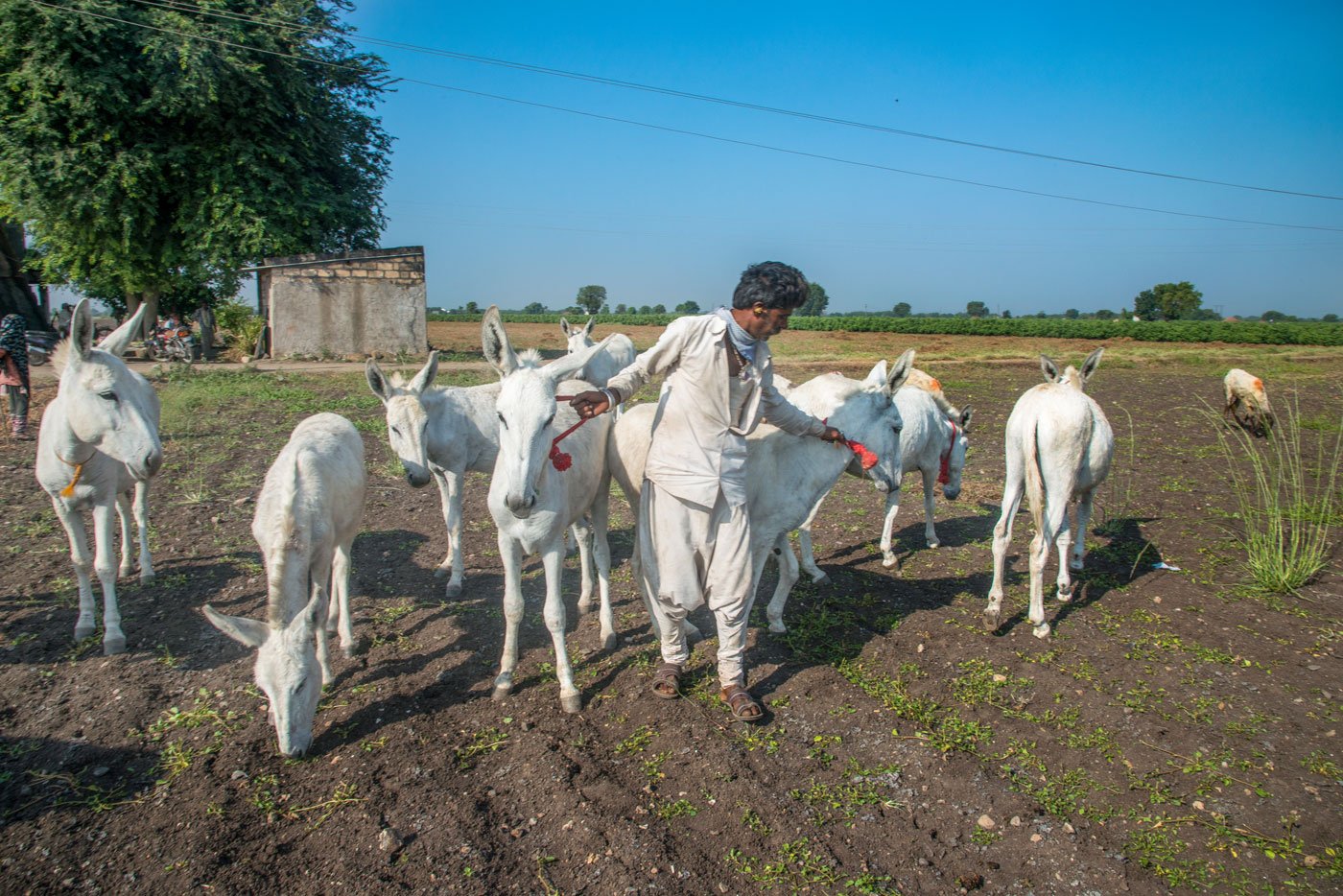
Kholabhai Jujubhai trying to control his pack of Halari donkeys in Jampar village, Devbhoomi Dwarka district
Ramesh Bhatti of the Centre for Pastoralism says the average size of a herd depends on the size of the owning family. A family of four brothers who are breeders may have 30 to 45 donkeys. They sell these animals at an annual fair near Ahmedabad that is held after Diwali. Migrating communities on the other hand, who use the donkeys as pack animals, tend to keep four or five females.
The breeders and pastoralists had not found a market for donkey’s milk – until recently. “Donkey milk is not a mainstream product,” says Bhatti, “these are not milch animals. Though in 2012-13 a social venture called Organiko in Delhi began introducing cosmetic products from donkey’s milk, there is still no formal market for that in India.”
Halari donkeys are an indigenous breed of Saurashtra, deriving their name from Halar, a historical region of western India corresponding to the present districts of Jamnagar, Devbhumi Dwarka, Morbi and Rajkot. I first got to know about the breed from Ramesh Bhatti,. These strong and well-built donkeys, white in colour, can walk up to 30-40 kilometres in a day. They are used as pack animals during pastoralist migrations and also to pull carts.
The Halari was the first from Gujarat to be registered and recognised as an indigenous donkey breed by the National Bureau of Animal Genetic Resources . Nationally, it was the second after the Spiti donkey from Himachal Pradesh and just ahead of the Kachchhi, also from Gujarat.
The 20th Livestock Census 2019 records an alarming decline in the donkey population across India – with their numbers falling from 330,000 in 2012 to 120,000 in 2019 – a decline of around 62 per cent. In Gujarat, this drop is visible in the numbers of Halari donkeys as well as the breeders.
A study started in 2018 by Sahjeevan (and submitted to the Department of Animal Husbandry, government of Gujarat), shows a dramatic 40.47 per cent decline in the population of all types of donkeys over five years. The number of Halaris in the 11 talukas of Gujarat where the animals and their breeders live has fallen from 1,112 in 2015 to 662 in 2020. And the number of Halari breeders has gone down from 254 to 189 in the same period.
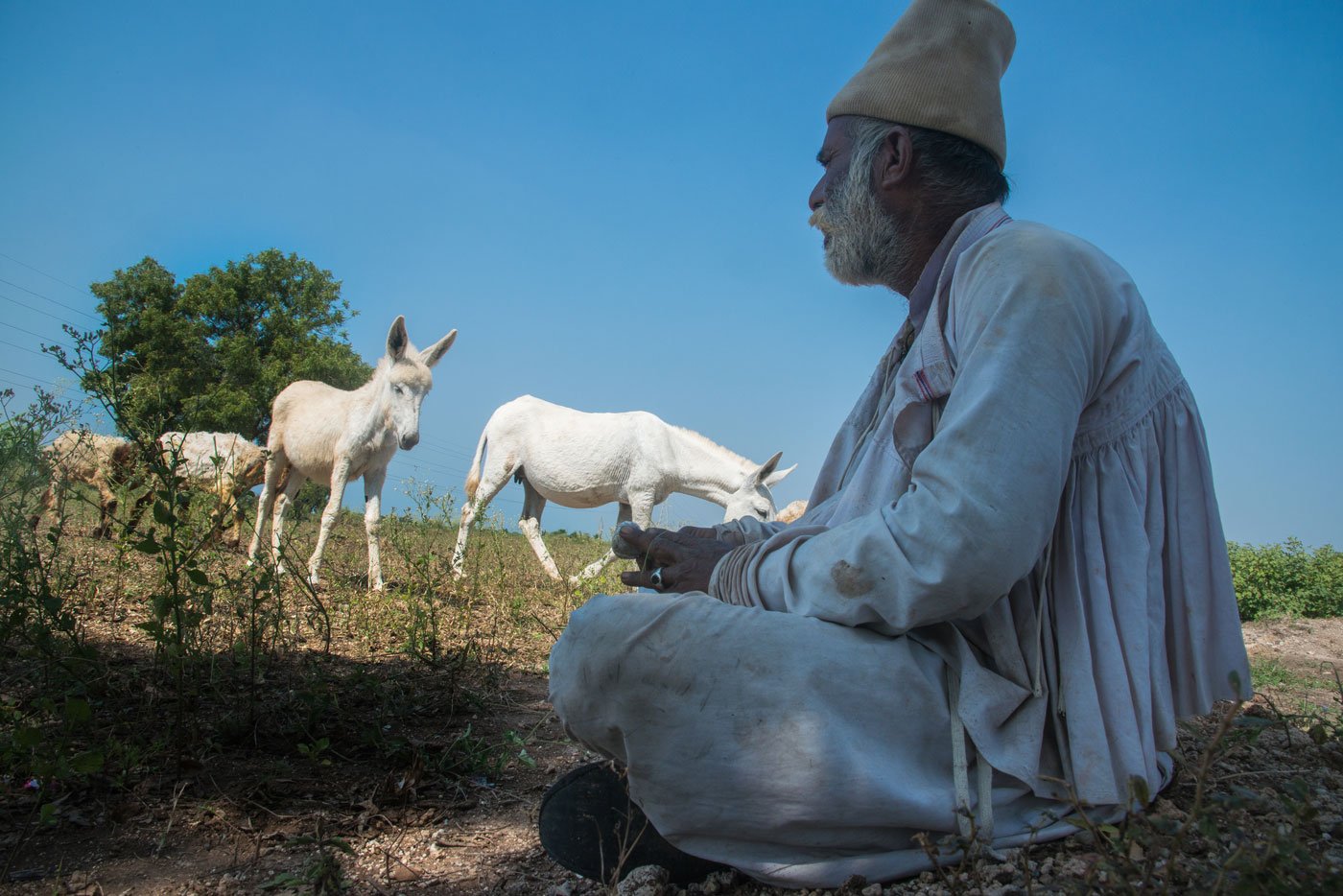
Mangabhai Jadabhai Bharwad keeps an eye on his herd of Halaris in Jampar; he has a deep understanding of the changes underway in the nomadic way of life
The reasons for the decline? “Where is the land for donkey grazing?” asks a frustrated Mangabhai Jadabhai Bharwad, a pastoralist of Jampar village, who is in his late 50s. “Most grazing lands are now under cultivation. So much of farming everywhere. Nor can we graze in forest land. That’s forbidden by law.” And, he adds, “Maintaining the Halari male is a tough job. They have a bad temperament. Their numbers do not grow fast.”
Changing climatic conditions and increasingly erratic rainfall patterns also bother the herders. Saurashtra saw excess rainfall this year, killing many sheep and goats. “This year, 50 per cent of my herd died because of rain,” says Hamir Haja Bhudiya, 40, also of Jampar village. “It poured constantly for days in July. At first, I thought none of my animals would survive, but thanks to Lord Krishna, some did.”
“Earlier everything was balanced,” says Rurabhai Kanhabhai Chhadhka, a herder in his 40s in Bhandaria village of Bhavnagar district’s Gadhada block. “Not too much of either rain or sun. It was easier to graze. Now suddenly there is so much rain at one time, my goats and sheep die. And with falling income from other animals, it is tough for us to maintain a huge herd of Halari." The absence of veterinary officers on the migration routes, when the animal is sick and needs medical attention, adds another level of difficulty for the herder.
Some families have simply sold their donkey herds. "The younger generations are not interested in donkey herding,” said 64-year-old community leader and Halari breeder Ranabhai Govindbhai of Paravada village in Porbandar block and district. “What other uses do these animals have now besides pulling carts during migration? Those tasks we nowadays manage with small tempos.” (The pastoralists sometimes hire small tempos to drop off a few heavy essentials at points ahead on their route so they can stay focused on the herd).
There is also, says Ranabhai, a social stigma attached with rearing donkeys. “Who wants to hear – ‘ dekho gadhera ja raha hain ’ [‘look, donkeys are going by’] – that's not something anyone deserves to hear from others." Ranabhai’s own herd has fallen from 28 to 5 over the past two years. He sold many Halaris because he was unable to maintain them and needed to raise cash.
A Halari can fetch Rs. 15,000-20,000 at the fair which is held at Vautha in Dholka taluka of Ahmedabad district. The buyers are from within the state or from other states – from other nomadic communities, or some looking for sturdy pack animals – for use, for example, in mining areas – or for pulling carts
So what was that sensation over Rs. 7,000 for a litre of donkey’s milk about? It began with local newspapers reporting the sale of a single litre – just the one – for Rs. 7,000 in Mota Garediya village of Jamnagar’s Dhrol block. The lucky recipient of that price was the herder Vashrambhai Tedhabhai. He told reporters he had never himself heard of anyone getting such a price, ever.
'If an animal is sick there is no one to take responsibility here. It is we who will have to give an injection. There are no animal doctors here'
Vashrambhai said that in September this year, a man from Madhya Pradesh had come to buy a Halari donkey's milk from him. Jamnagar’s maldharis mostly don’t use donkey milk themselves. (The term maldhari is derived from the Gujarati words mal – livestock – and dhari – guardian – for herders). Sometimes, when approached for it for medical reasons, like for treating sick children, they give it away free. But the person from MP did not reveal his reason for buying the milk. Vashrambhai milked his donkey – and, apparently, the buyer as well – asking 7,000 rupees for a litre! He paid in cash, the herder, himself astonished, told mediapersons.
With that, even more journalists descended on Garediya. But no one has figured out what the buyer needed that litre for.
Unlike cows, donkeys are rarely bred as milch animals. “A donkey can yield up to a litre of milk a day,” says Bhatti of the Centre for Pastoralism. “A litre would, though, be the maximum – 10 times less than what they can get from a cow here. And even that would be only for up to 5-6 months after it has given birth to a foal.” So pastoralists have never known donkey milk to fetch monetary reward.
In August, the National Research Centre on Equines brought a few Halari donkeys from Gujarat's Mahesana district to its Bikaner farm for research. The Sahjeevan report cites the NRCE as declaring that “Halari donkey milk contains the highest amount of anti-ageing and anti-oxidant properties compared to all other livestock species/breeds milk.”
This report, says Ramesh Bhatti, sparked off the rise in the milk’s popularity and a new interest among Halari donkey breeders. Bhatti himself has received many queries about the breed from different parts of the country. Meanwhile, companies like Aadvik foods, which in 2016 had started a 1,000-litre camel milk dairy in Kachchh, are said to be contemplating a 100-litre dairy for donkey’s milk. “Donkey’s milk is very popular in cosmetics and there are legends of Greek, Arab [and Egyptian] princesses bathing in donkey’s milk,” Bhatti adds. “A market for this is emerging in the cosmetic industry in India and in the West.”
He doubts though that the price will ever again reach 7,000 rupees a litre, even with a dairy coming up. “Recently Aadvik bought 12 to 15 litres of milk from herders for some research,” he informs me, “and they paid the owners 125 rupees a litre.”
Not quite the sum to stoke the daydreams of donkey breeders.
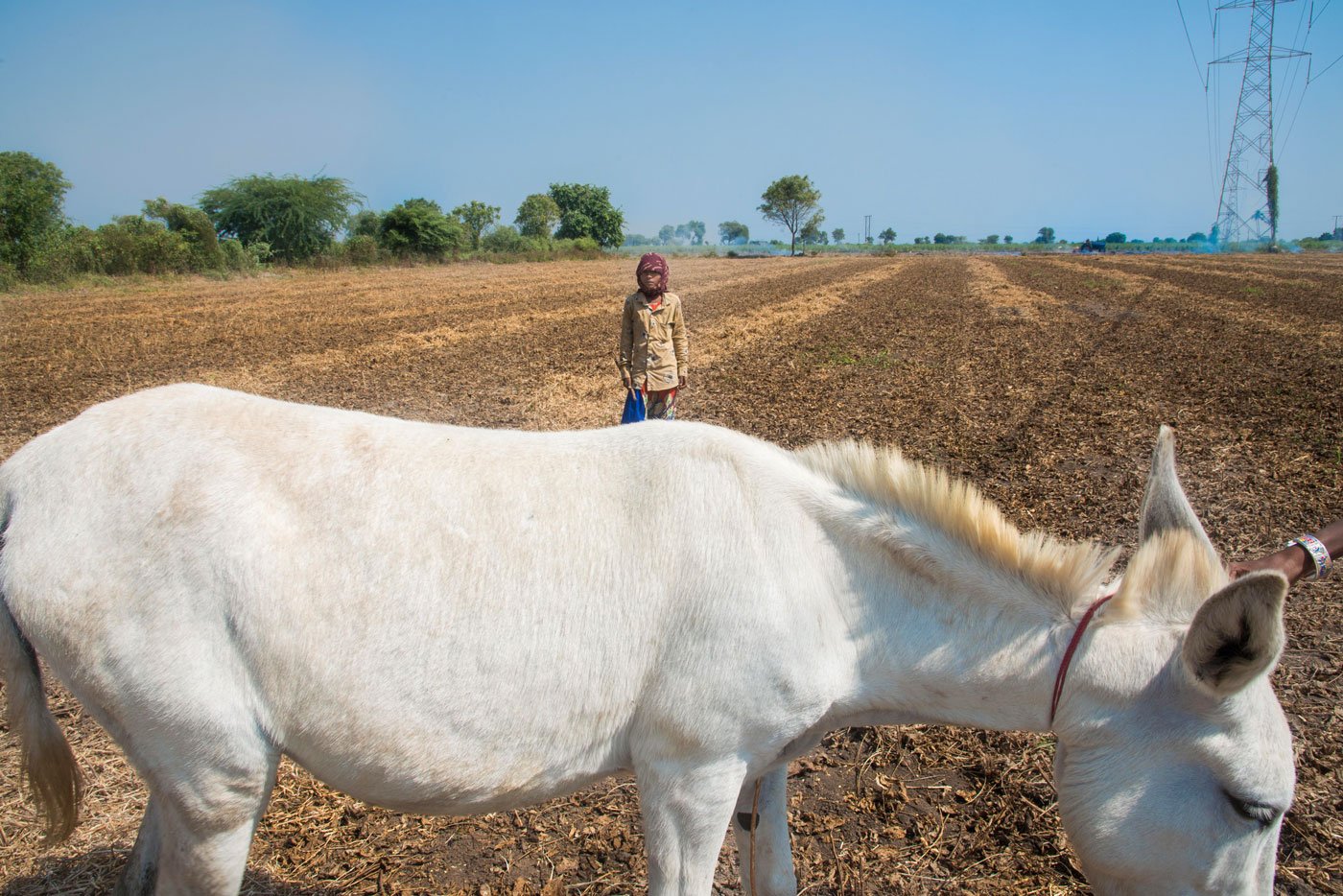
The white-coloured Halari donkeys of Saurashtra are of strong, muscular build and can walk up to 30-40 kilimetres a day carrying loads during pastoralist migrations.
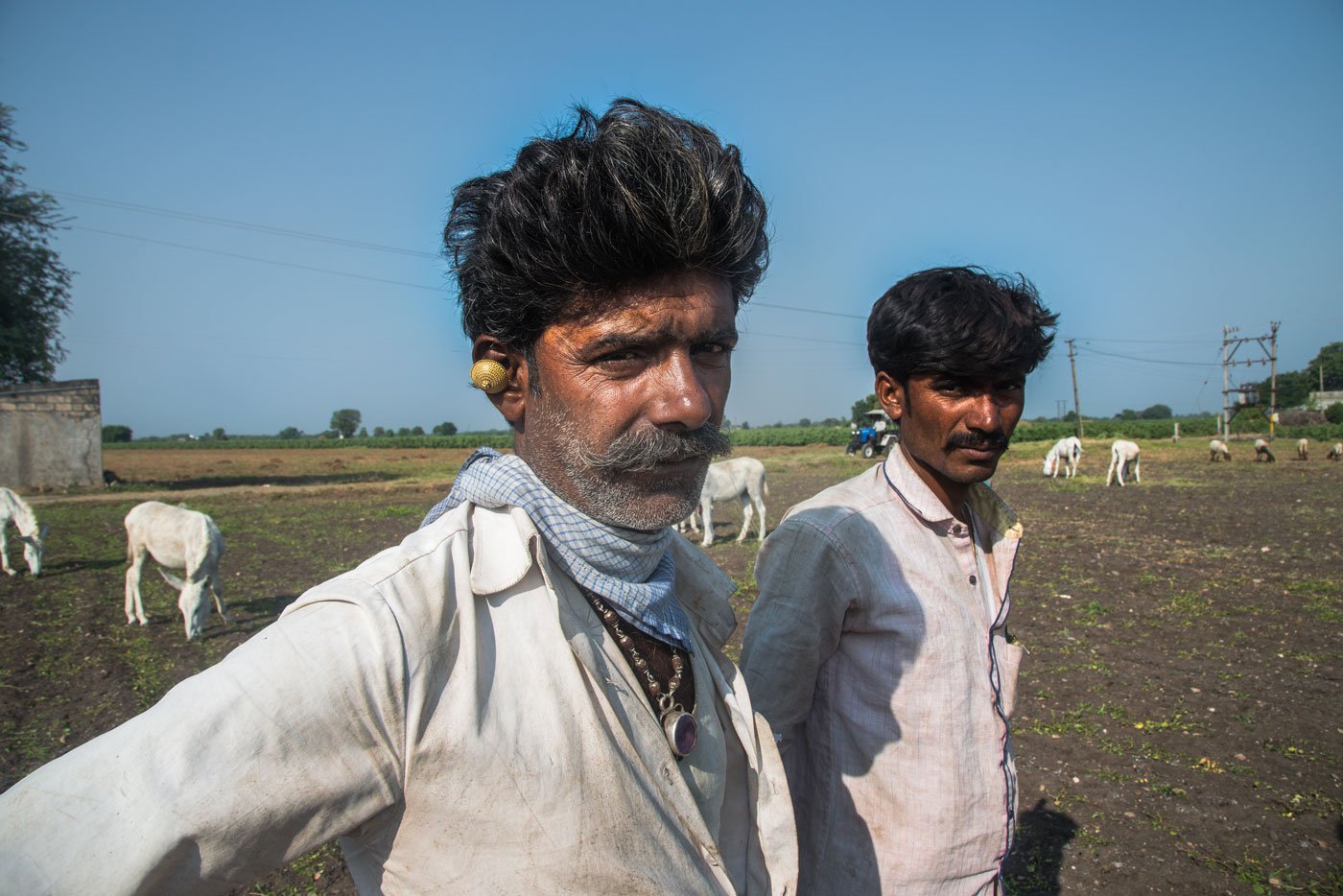
Kholabhai Jujubhai and Hamir Haja Bhudiya are brothers who together own 25 Halari donkeys, perhaps the highest number now possessed by any family.
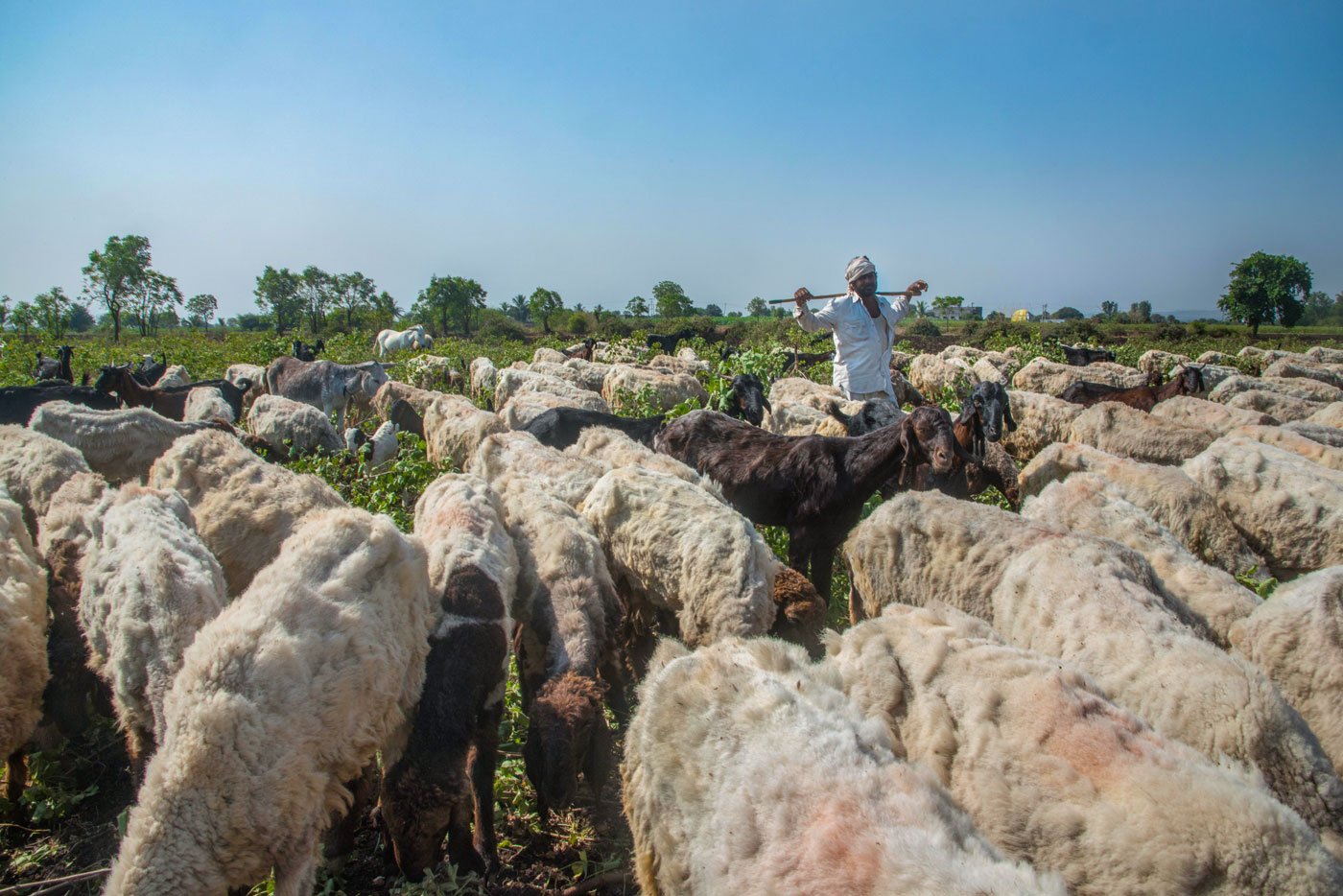
Chanabhai Rudabhai Bharwad of Dhoraji village in Rajkot district. The migratory Bharwad community maintains indigenous sheep and goats breeds alongside Halari donkeys.
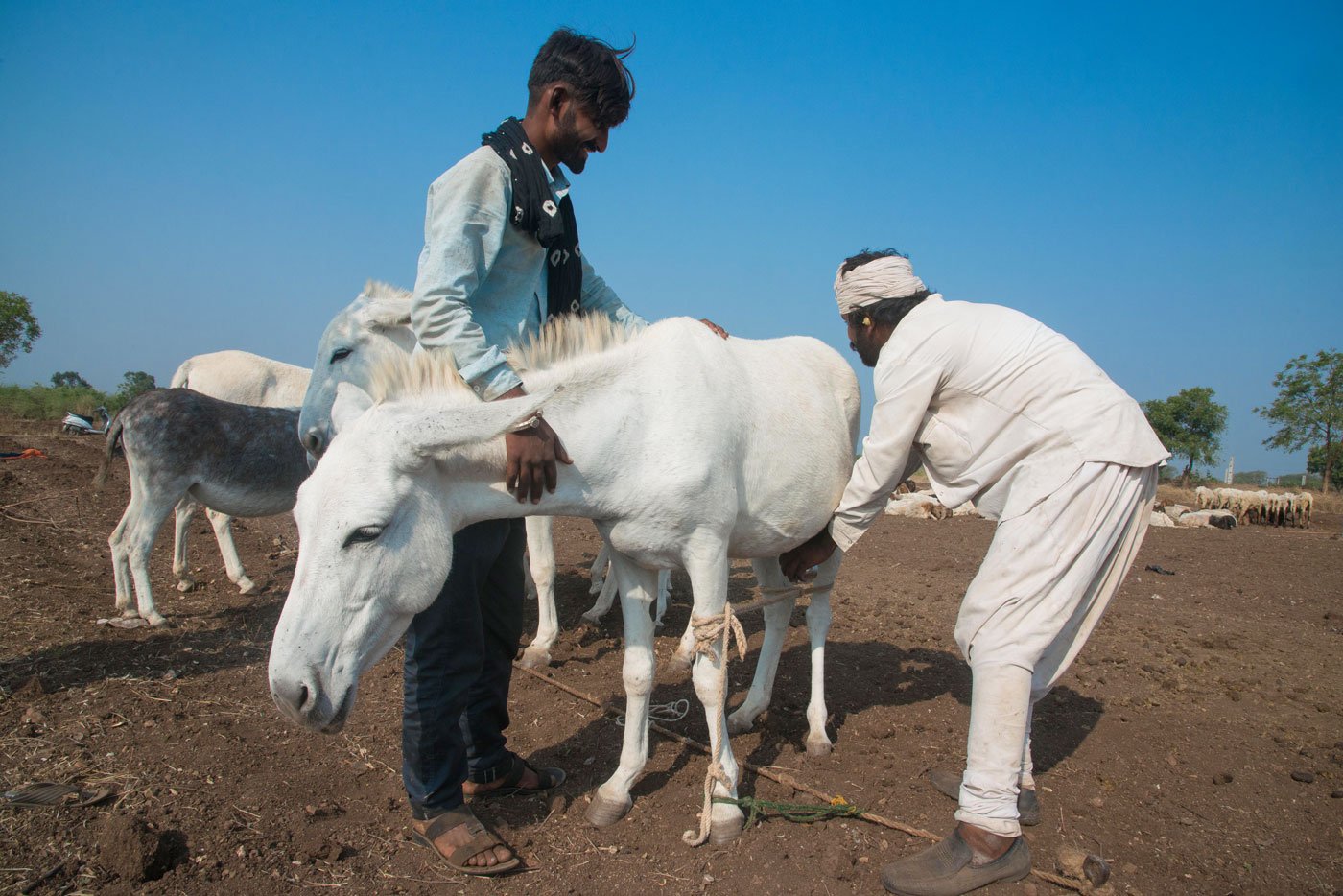
Chanabhai Rudabhai Bharwad demonstrates the process of milking a Halari. This milk is believed to be an immunity-booster and to possess many positive medicinal qualities.
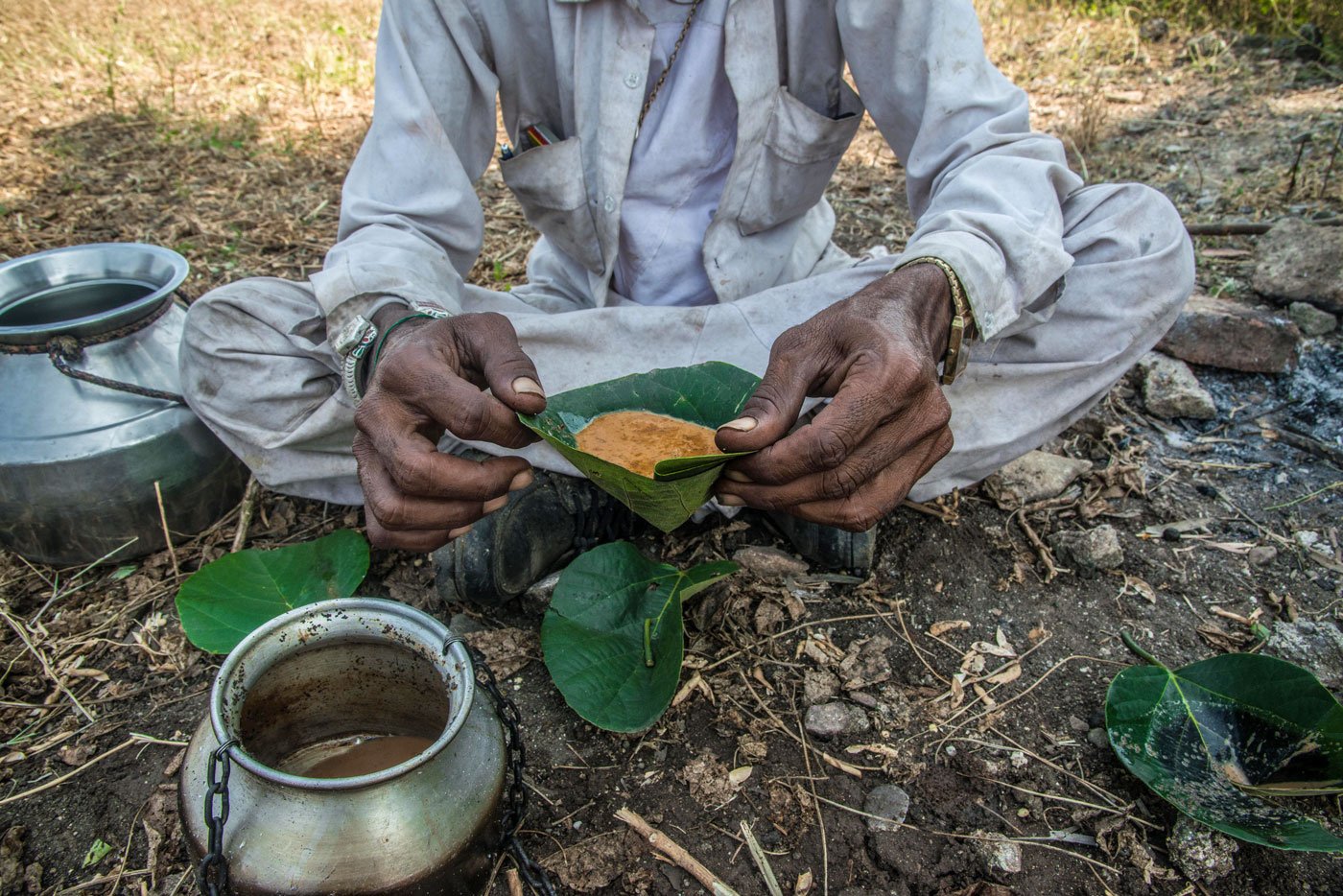
A pastoralist (or a maaldhari ; t he term is derived from the Gujarati words mal, for livestock, and dhari or guardian, for herders) drinks tea from a cup made of banyan leaves. The nomads practice a plastic-free, eco-friendly lifestyle.
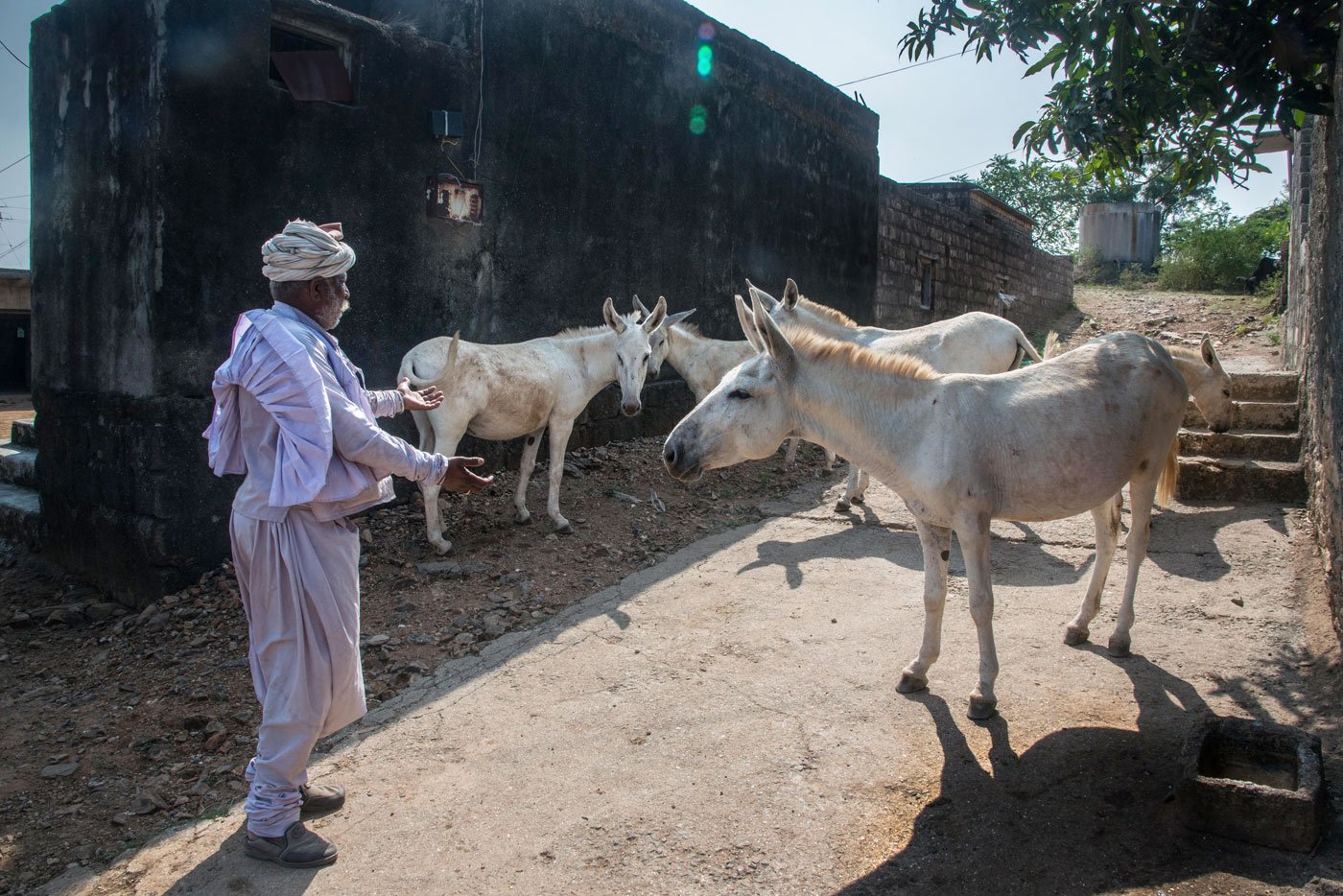
Ranabhai Govindbhai Bharwad of Paravada village in Porbandar district is one of the most famous Halari breeders. But he has sold off over 20 of his animals and his herd is down to just five.
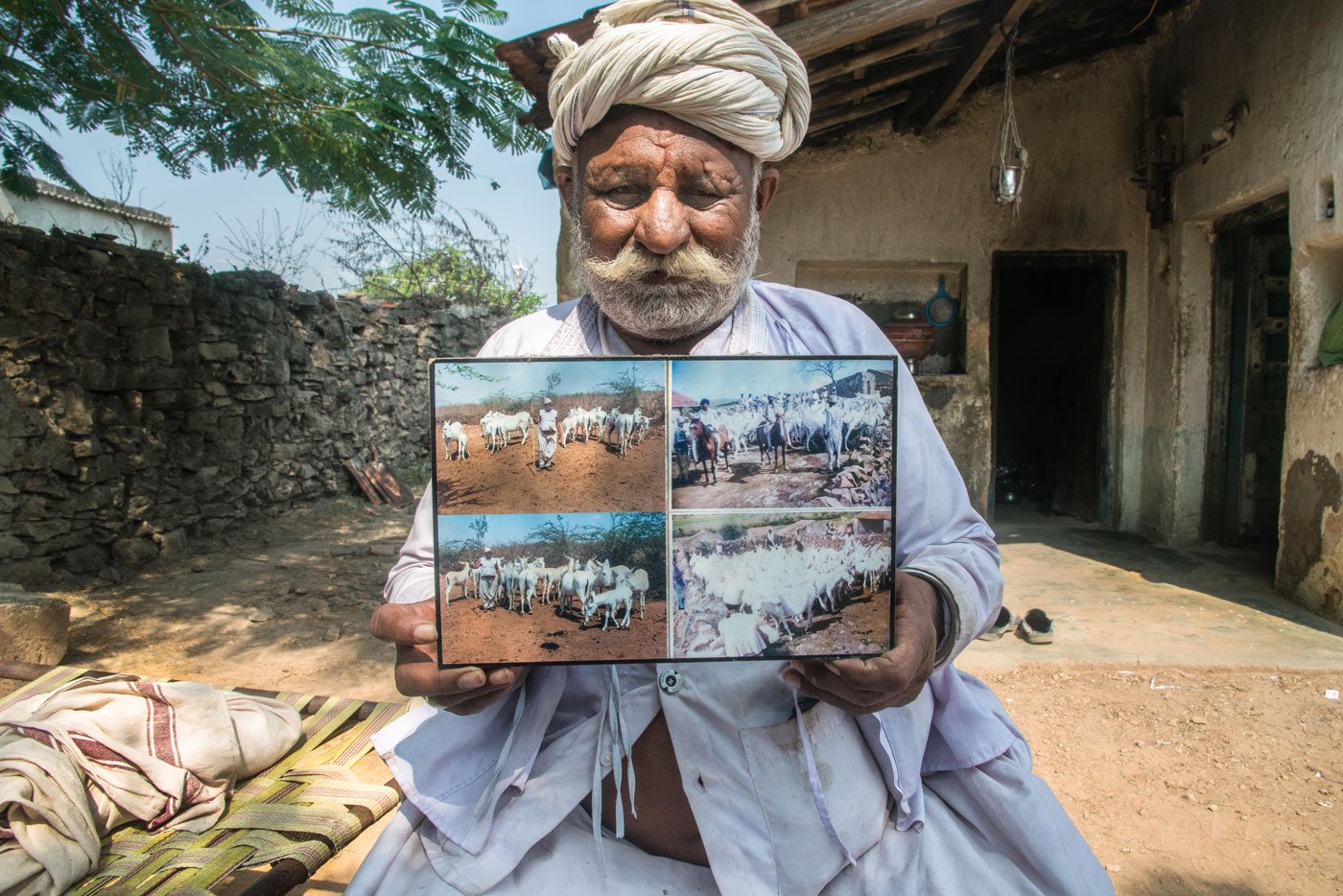
Ranabhai Govindbhai with pictures of his once huge herd of Halaris. They are tough to manage, he says, and believes it is better to keep the herd small.
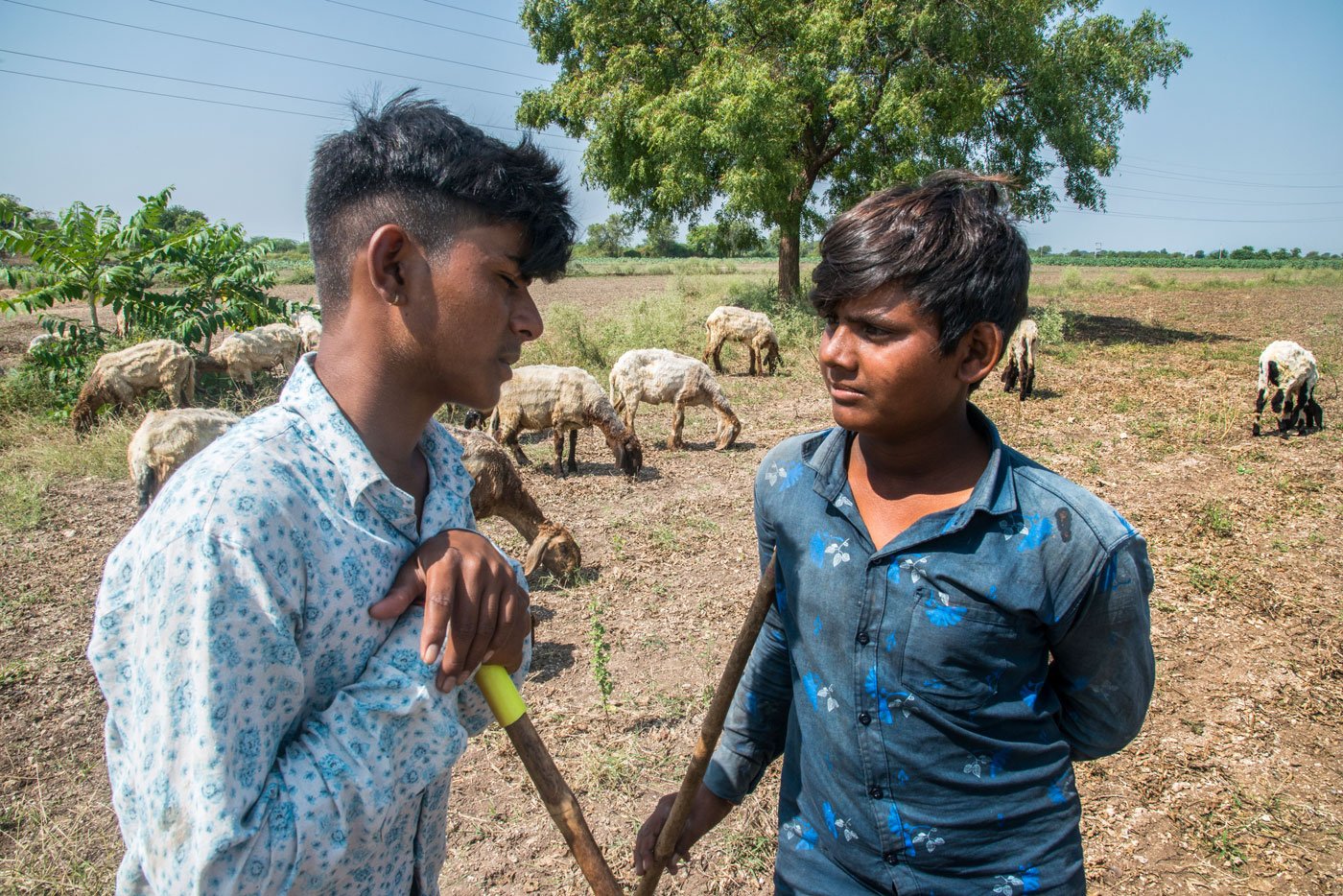
Jignesh and Bhabesh Bharwad, younger members of the Bharwad community, love the traditional lifestyle of the pastoralists despite being enrolled at schools in Jamnagar.
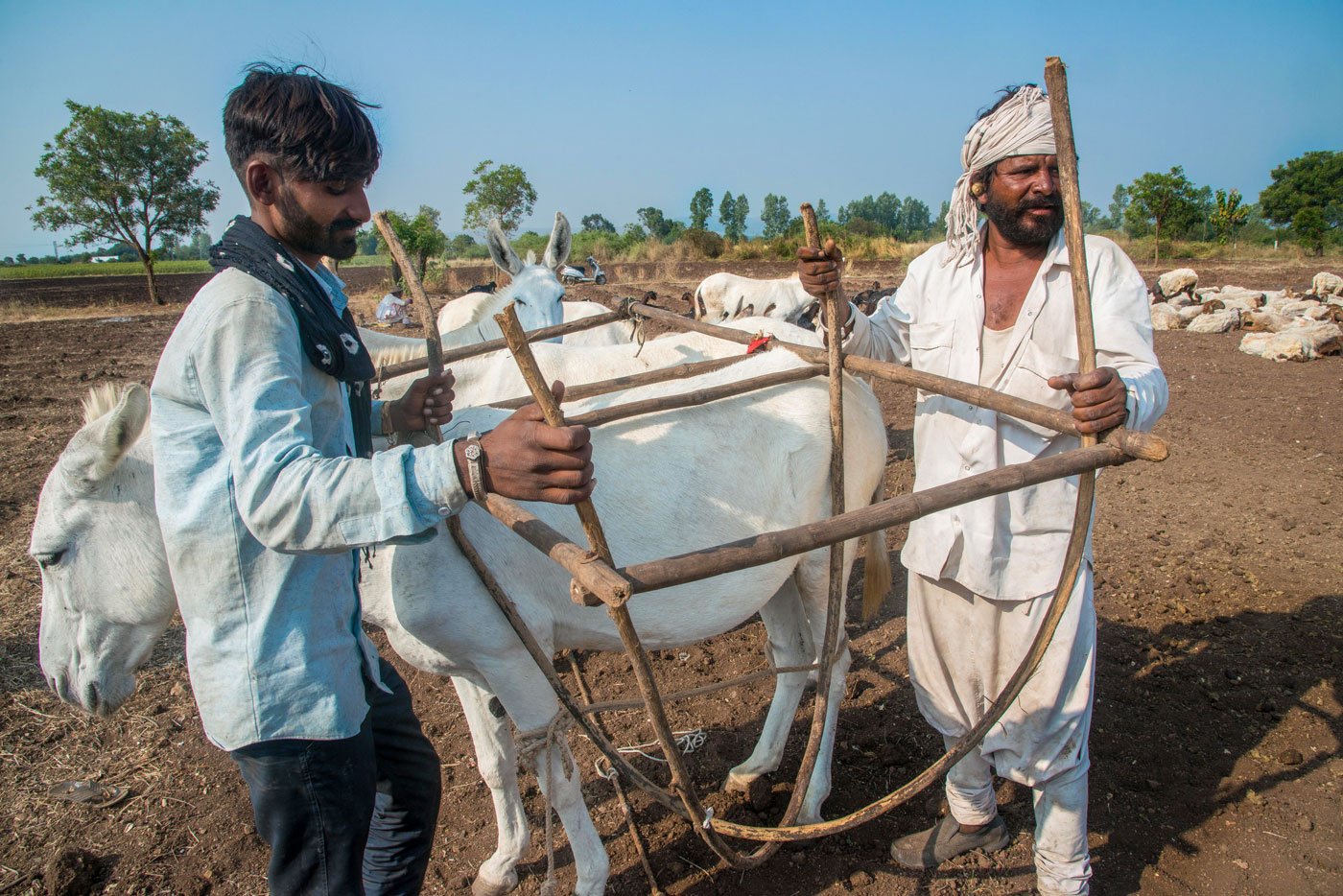
Samabhai Bharwad in Bhandaria village of Bhavnagar district mounting the rough wooden structure on which the donkey will carry its load. The curved frame must rest at level with the donkey’s belly to maintain balance.
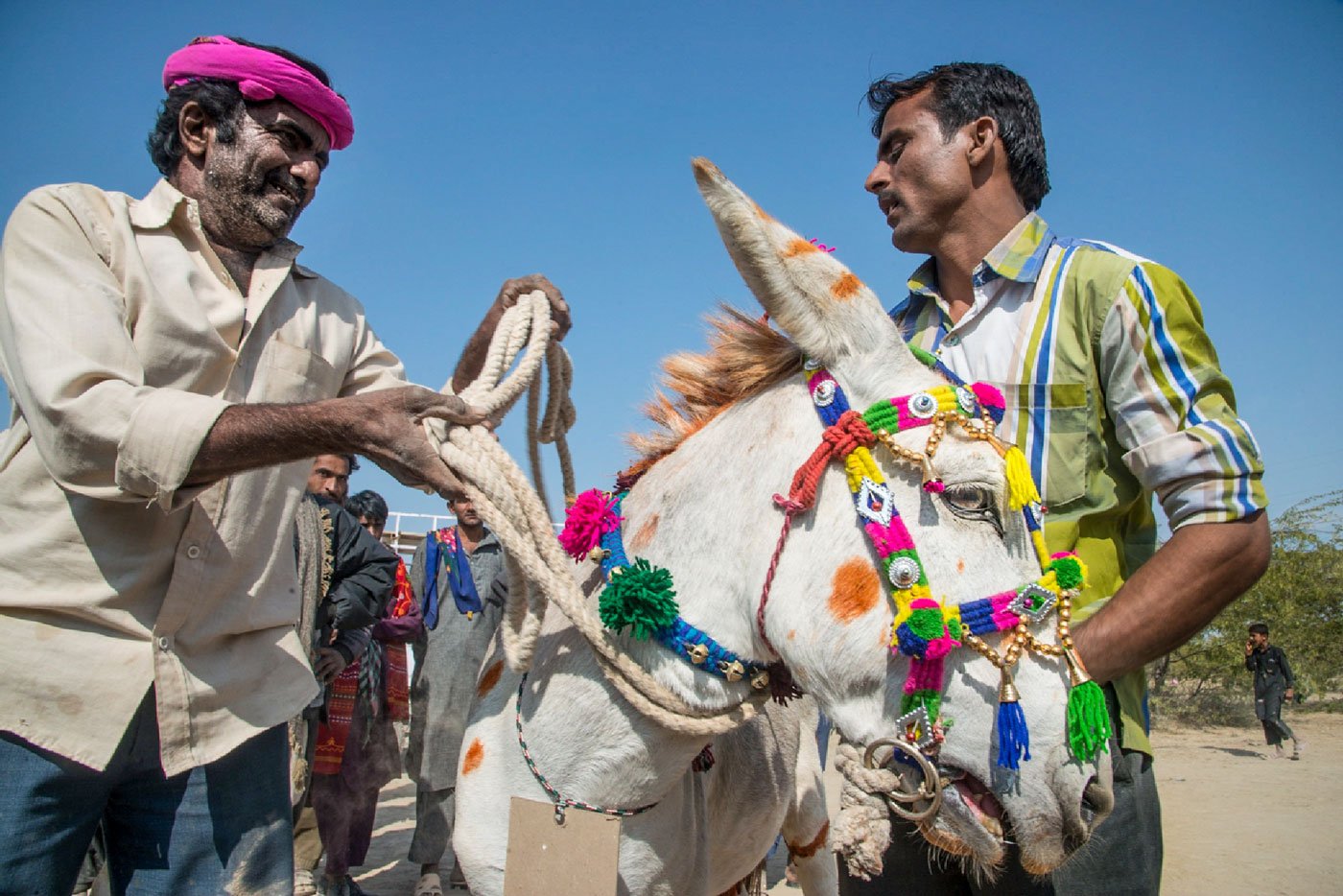
A well-turned-out donkey on display at an animal beauty pageant in Banni in Kachchh district.
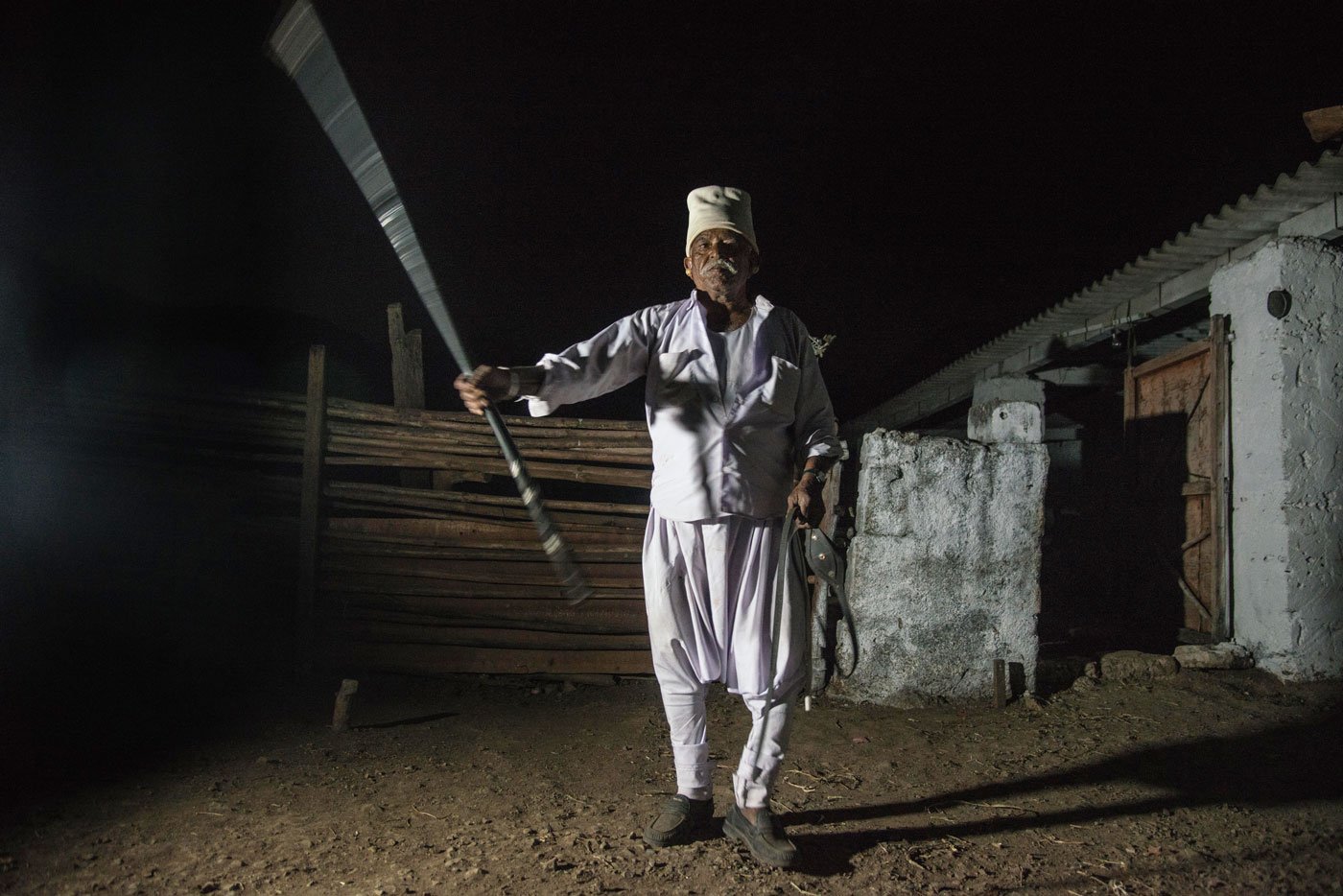
Community elder Savabhai Bharwad, who lives in Sinchit village of Rajkot district, once had a big herd of goats, donkeys, and buffaloes. Shrinking grazing grounds have seen him sell all but the buffaloes.
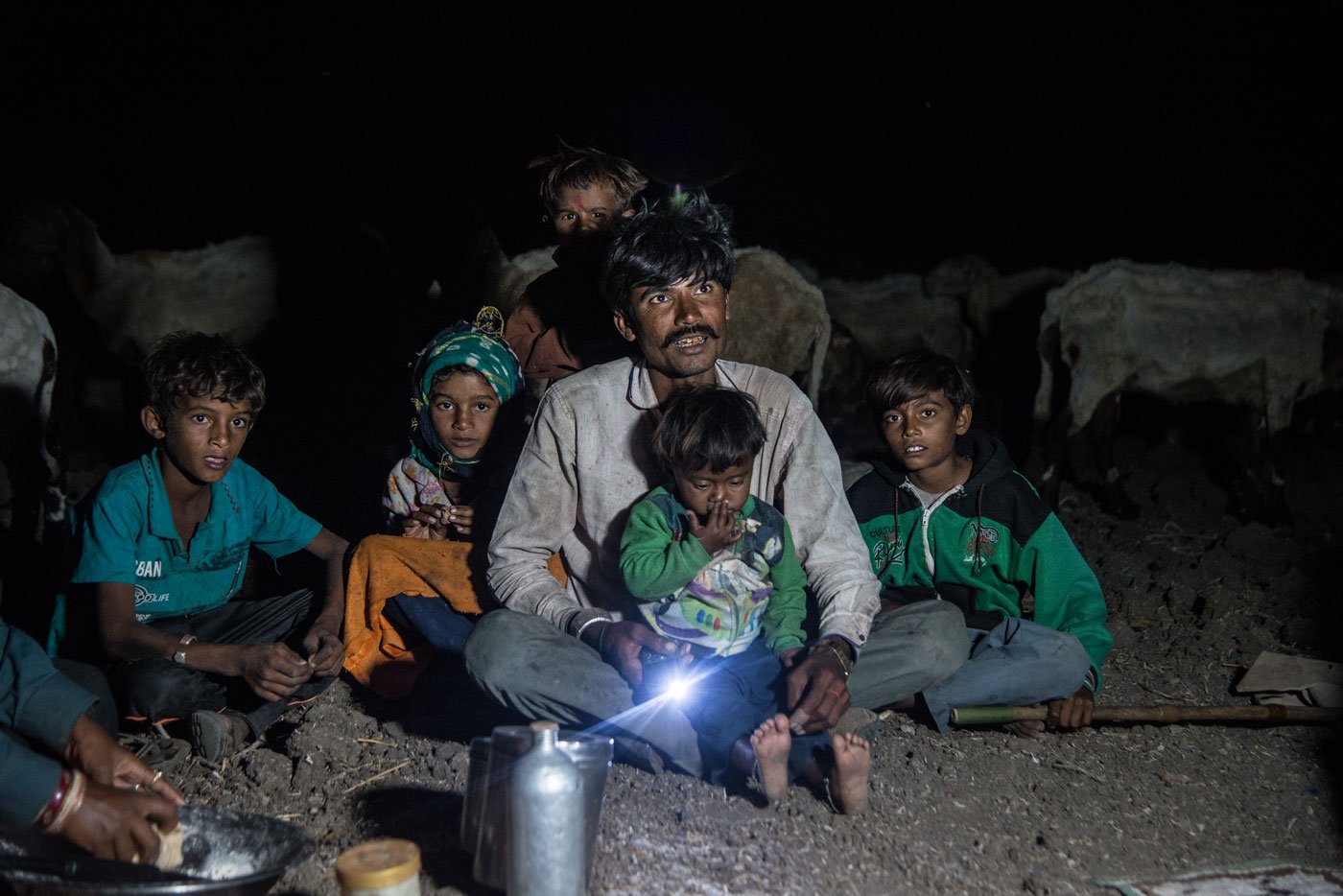
Herder Hamir Haja Bhudiya out in the fields at night with his children and his nephews and nieces in Jampar village of Devbhoomi Dwarka district.
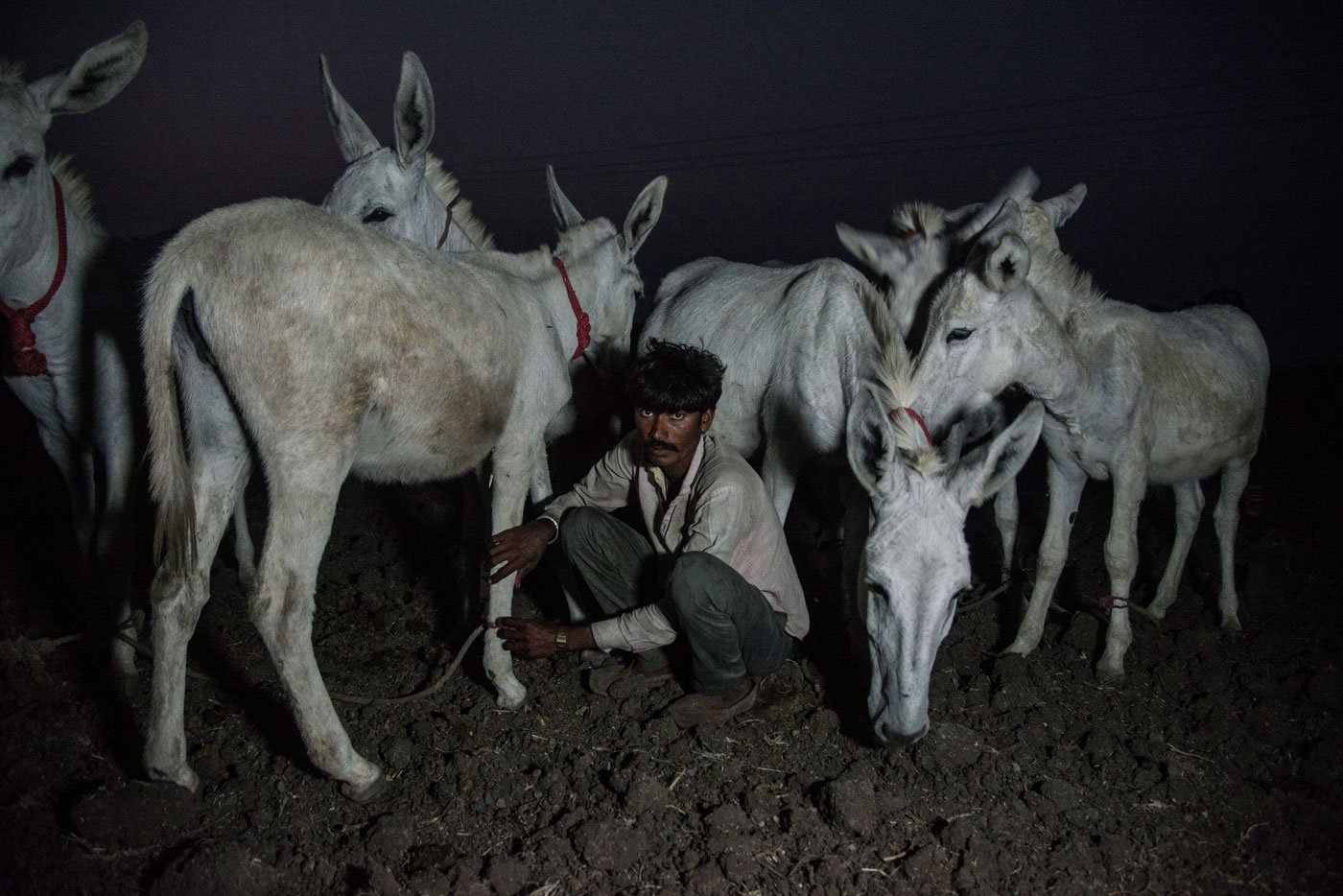
Hamir Haja enforcing night-time security protocols. He says the donkeys tend to run away if not tied up well.
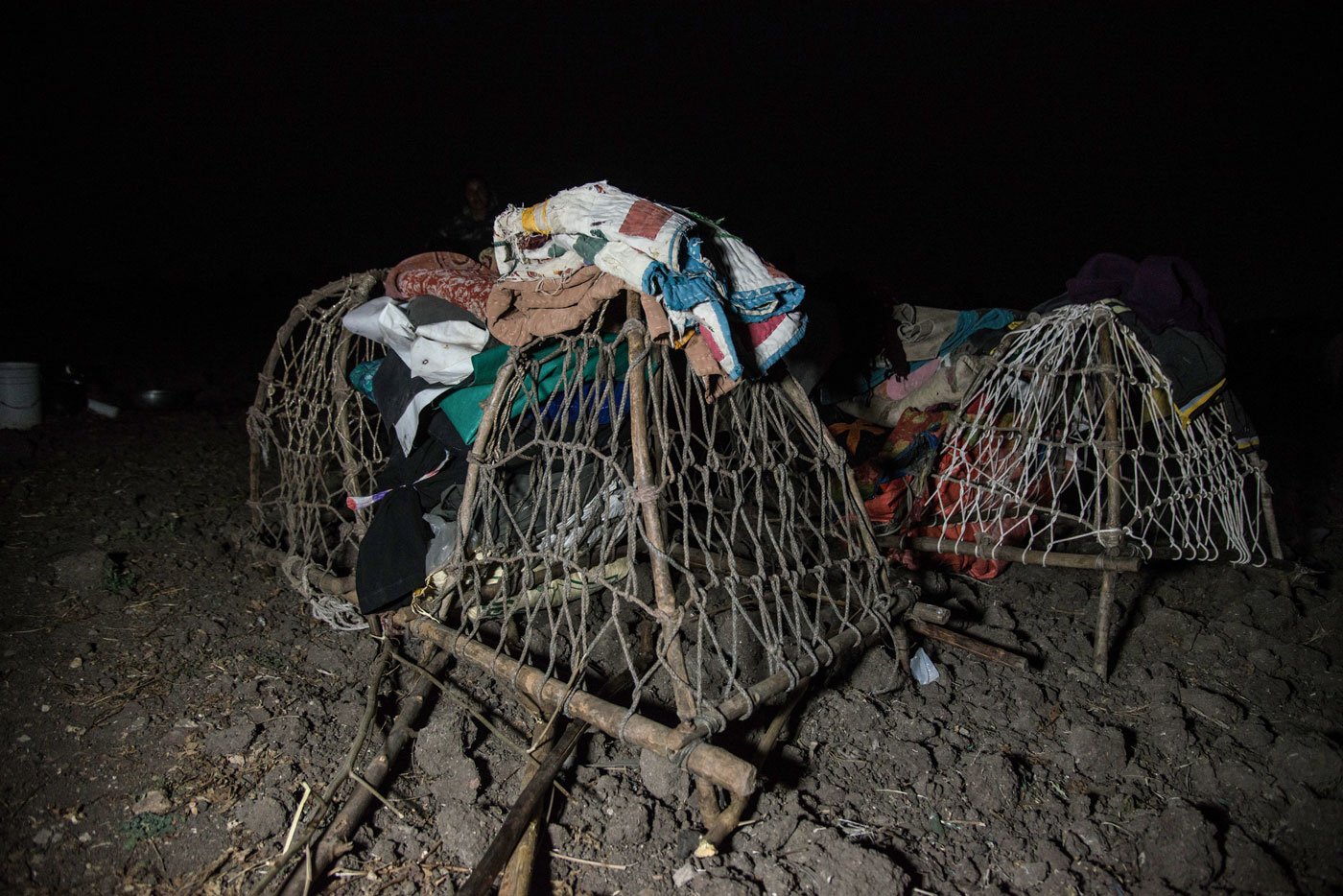
The members of this pastoralist community usually sleep under the open sky using blankets they carry with them on their migrations. The temporary shelters they make on farmland or on the roadside are called ‘ nass .’
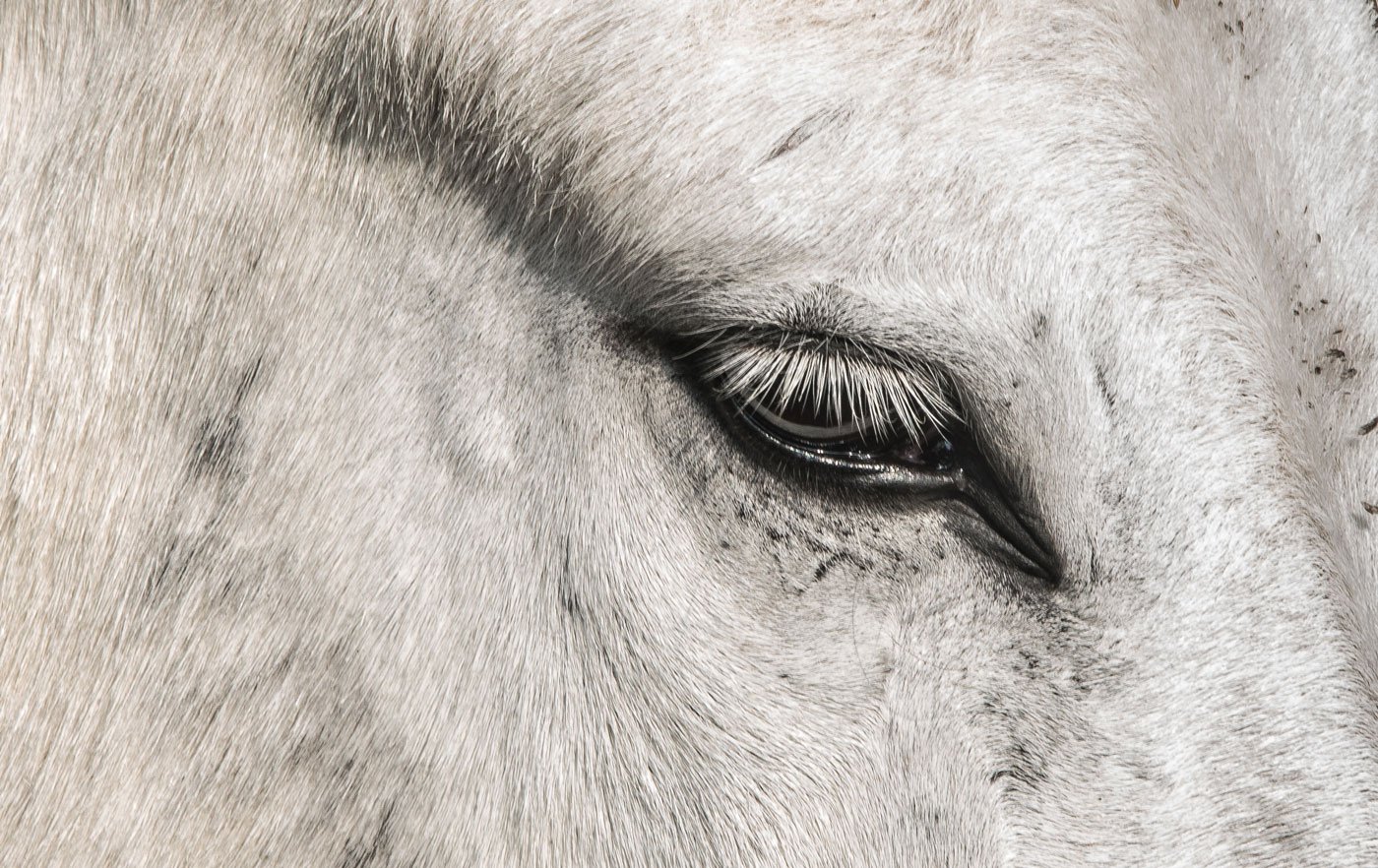
The Halari is a good-looking, good-natured breed, with gentle eyes: 'These animals are beautiful but not sustainable for our livelihoods', says Kholabhai Jujubhai Bharwad of Jampar village.
